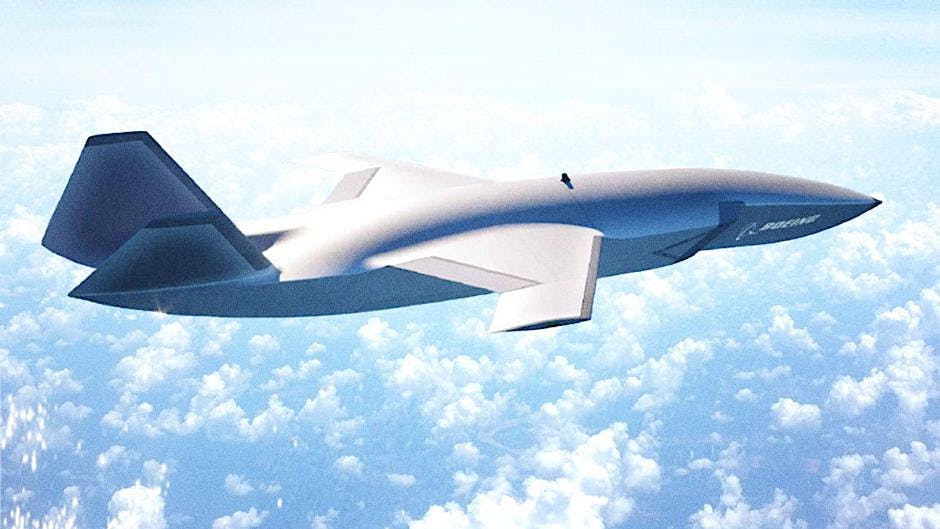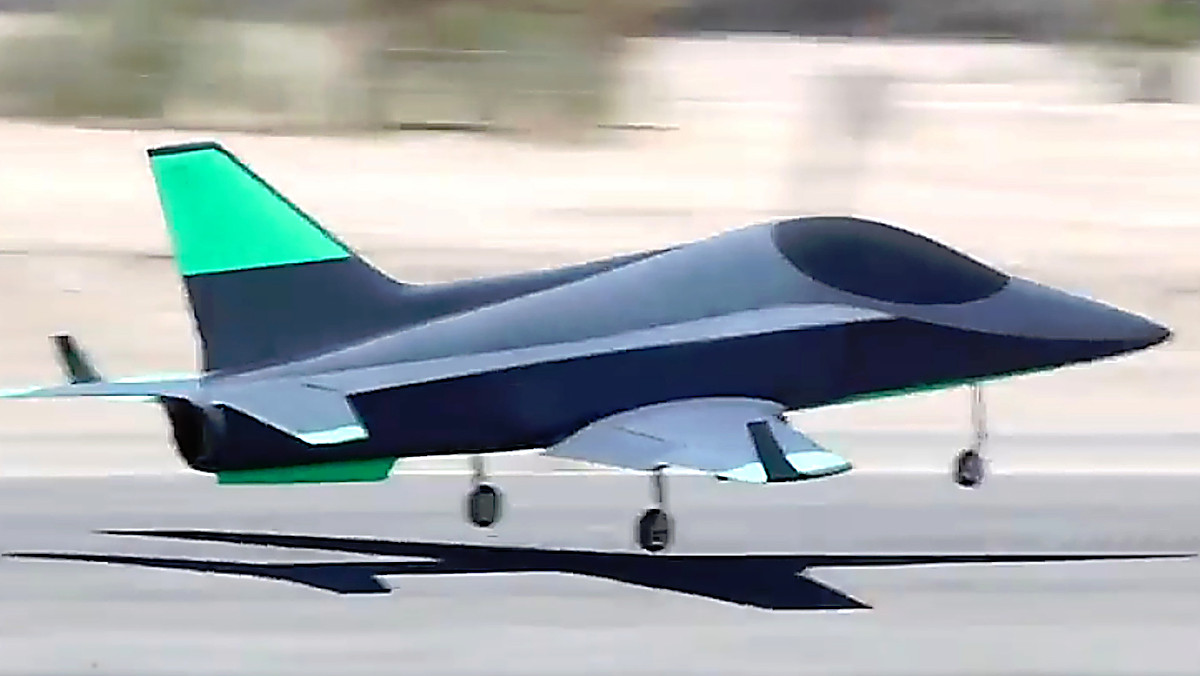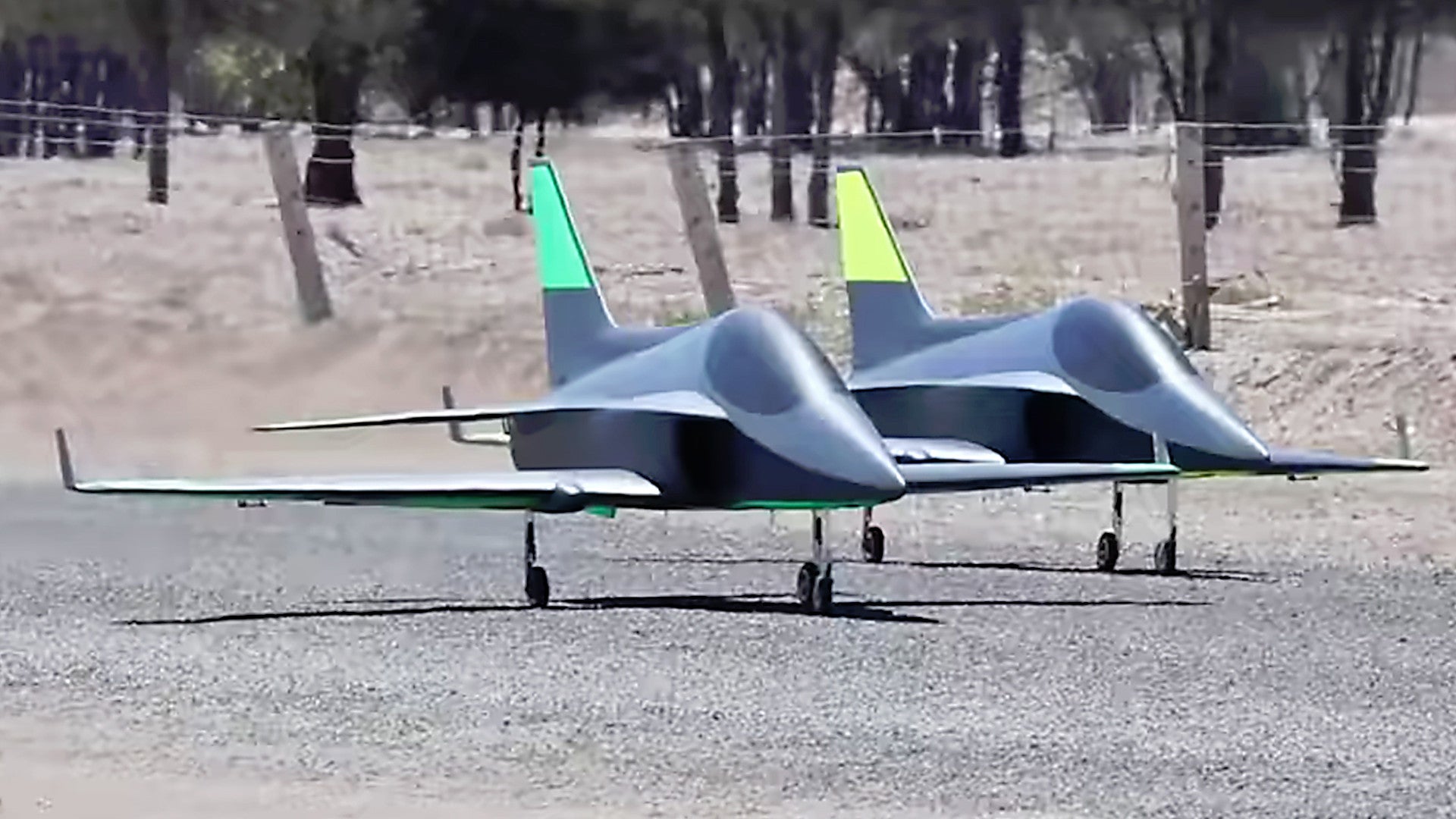Boeing says that its Australian subsidiary has used systems developed in that country to enable a pair of unmanned, subscale, jet-powered test aircraft to conduct a semi-autonomous teamed flight for the very first time. This is part of the development of the Airpower Teaming System for the Royal Australian Air Force, which centered around a stealthy “loyal wingman” drone intended to work together with that service’s manned platforms, including its F-35A Joint Strike Fighters.
Boeing Australia announced the successful test, and released an accompanying video, on social media on Nov. 19, 2019. The Chicago-headquartered plane maker had officially unveiled the Airpower Teaming System (ATS) effort at the Avalon Air Show in Australia on Feb. 27, but the news had already emerged, including on The War Zone, the day before. Boeing is under contract to build an initial demonstrator as part of the previously classified Loyal Wingman Advanced Development Program, which dates back at least to 2018. The Australian government expects to spend $28.5 million on the project over the next four years and Boeing is also helping with funding the work on the demonstrator through a separate agreement to invest around $42 million, in total, on various research and development programs in Australia.
“We successfully achieved our first autonomous teamed flights using high-performance jets as test beds and Australian-developed missions systems technology!” Boeing’s announcement on Facebook said. “Our team tested the jets’ abilities to safely communicate and coordinate with each other.”
The two jet-powered drones reportedly flew at speeds up to around 186 miles per hour during the test flight. Boeing did not elaborate on any of the specific test points, but did add “next, we’ll try more complex maneuvers, increasing teaming formation numbers and more complex missions.”
We do know that the Royal Australian Air Force’s (RAAF) goal is for the final ATS combat drones to be able to operate independently or in concert with manned platforms, using a new control architecture to autonomously maintain formation with other aircraft and perform various tasks. The technology that Boeing is testing now with these subscale drones aligns well with that plan.
It also makes perfect sense to be developing this control architecture now so that it is as mature as possible when the demonstrator is ready to fly. In February, Boeing said that this prototype was already under construction and was scheduled to have its first flight next year, according to Aviation Week.

The company’s plan is to “fly, test and fail . . . and get this exciting kind of quick learning” using the ATS demonstrator, Shane Arnott, head of Boeing’s Phantom Works International, told Aviation Week. “That becomes a real advantage for us to go fast and get to trust the product quicker, which is what autonomy is all about.”
“This is an innovation program for the RAAF. It is not a capability delivery,” he continued, explaining that it would offer Australia an opportunity to further explore manned-unmanned teaming concepts of operation, broadly. “This is an opportunity for them to try before they buy, but do it in a meaningful way.”
The RAAF already expects the 38-foot-long ATS loyal wingmen, which will use a bizjet-class jet engine and have a range of around 2,000 nautical miles, to eventually be able to perform a wide variety of missions working together with various manned aircraft. This includes fighters such as its F-35As and F/A-18E/F Super Hornets, as well as its EA-18G Growler electronic warfare aircraft, E-7A Wedgetail airborne early warning and control platforms, and P-8A Poseidon maritime patrol planes. With the exception of the F-35A, these are all notably Boeing products, too.
The unmanned aircraft will have a modular design with the ability to accommodate “snap-on, snap-off” payloads to rapidly reconfigure them for different missions, according to Aviation Week. Initially, this could include various sensor packages or electronic warfare systems.
Exactly how much autonomy the drones might have would “depend on what the system is paired with, what it does, what the effect is, and who does what in the teaming system,” Kristin Robertson, the Vice President and General Manager of Boeing Autonomous Systems, had also told Aviation Week in February. “Somewhere in the equation there will be a man in the loop, from a ground station or controlled from commercial derivatives or fighters. I would characterize the autonomy as actionable intelligence.”
For Australia, this could offer a major boost in capability at a relatively low cost and without the time and expense required to train traditional pilots. Tethered to manned aircraft via datalink, the ATS drones could provide the pilots of manned aircraft with a more comprehensive picture of the battlespace around them and help them detect threats faster in order to avoid or neutralize them. Combined with the drone’s stealthy design, this could be particularly valuable for helping to further reduce the risks to higher cost assets, such as the F-35, when penetrating deep into heavily defended areas.

The modular nature of the design also supports the goal of the rapid integration of new capabilities and payloads with minimal cost and effort. As time goes on, armed versions of the ATS unmanned aircraft could help increase the magazine capacity, sensor diversity, and more of a mixed manned-unmanned force, or even just operate as autonomous swarms.
Really, this is a low-risk way for the RAAF to explore semi-autonomous concept of operations, in general. ATS may turn out to have limited potential, but it is extremely cost-effective and could serve as a valuable stepping stone to future unmanned developments.
We also don’t know the origins of the lower-end surrogates that Boeing used in this particular test, but they are intriguing in their own right. They could be scaled into larger formations and swarms for further testing even beyond the Airpower Teaming System program.

This is all in line with a broader concept, called Plan Jericho, which the RAAF is implementing across the force. This is focused on leveraging advancements in artificial intelligence, machine learning, unmanned platforms, and other high technology endeavors to find ways to expand capabilities within the limits of the country’s relatively overall small force structure. Other countries are increasingly thinking along similar lines and the number of programs concerned with developing loyal wingman-type unmanned aircraft around the world is growing.

With this in mind, Boeing is already eying pitching variants or derivatives of the ATS concept to other similarly sized militaries. The company says it will be able to craft and scale the exact capabilities of the unmanned aircraft to meet the demands of potential customers, according to Aviation Week.
“Allies around the world are looking for ways to maximize and extend their [force] structures,” Robertson added in her interview with Aviation Week. “Autonomous systems and some of the technologies behind them can make more of a game-changing leap in affordability and quantity, to complement their existing fleets.”
The autonomous teamed flight test shows that Boeing is already making important progress in software that will form the backbone of the ATS effort and that its team in Australia isn’t even waiting for the demonstrator to be ready to start showing off what the complete system may be capable of in the future.
Contact the author: joe@thedrive.com
